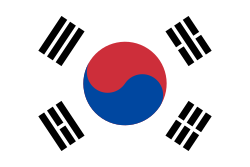IOM Vision
IOM aims to support and protect the most vulnerable individuals across Lebanon, including migrants, refugees, and local community members, against mounting humanitarian needs and socioeconomic hardship caused by a multitude of compounding crises. To address the mobility dynamics of the multi-faceted crisis, IOM will provide lifesaving support, build economic and community resilience against the loss of job opportunities and growing tensions, and seek to prevent and discourage unsafe and irregular migration.
Objective
Saving lives and protecting people on the move
|
Under this objective, IOM will provide humanitarian and protection assistance to the most vulnerable groups, including migrants, refugees, and Lebanese citizens, including health assistance, cash-based support, and case management and protection services for people in need, including for victims of exploitation and abuse. In doing so, IOM will work with a range of entities including primary healthcare centres, hospitals, local municipalities, government ministries and agencies, and local NGOs. |
|
IOM will support primary and secondary healthcare services to improve access to health for vulnerable groups, particularly migrants. Activities will include:
|
|
IOM will provide cash-based assistance to severely vulnerable households, including migrants, refugees, and the Lebanese. Activities will include:
|
|
IOM will deliver protection assistance to vulnerable migrants, host populations, and refugees, reached through partner referrals and community outreach. Assistance will include those who have been subject to violence, exploitation, and abuse, including Gender Based Violence (GBV) survivors, victims of human trafficking (VoT), as well as other vulnerable profiles. IOM will also target returning migrants, including irregular migrants intercepted at sea and shipwreck survivors, and families of victims. People targeted will receive case management support and services either directly by IOM or via partners. Protection services will be tailored according to the needs identified. Activities will include:
|
|
IOM field teams will contribute to the cholera response through the delivery of water, sanitation, and hygiene (WASH) activities. Activities will include:
|
|
IOM will provide:
|
Objective
Driving solutions to displacement
Under this objective, IOM will target communities experiencing inter-communal tension and/or prone to irregular migration, with a focus on North Lebanon, Akkar, and the Beqaa Valley. IOM will deliver locally-centred interventions to promote community resilience and social cohesion, with a focus on livelihoods, local governance, and the improvement of local services and public infrastructure. In doing so IOM will work with a range of entities including municipalities, local businesses, schools, clubs, government ministries, Social Development Centres, and primary healthcare centres.
|
IOM will implement projects to support local communities experiencing tensions and/or prone to irregular migration. This will be through community-based planning that promotes local collaboration and trust, while also enhancing community life: e.g., through improved public infrastructure, local services, or livelihood activities. Activities will include:
|
|
In addition to resettlement activities, IOM will also facilitate complementary protection pathways for refugees and Lebanese, such as family reunification and labour migration. Activities will include:
|
|
IOM will enable the provision of services by local NGOs to strengthen the overall provision of MHPSS in Lebanon. IOM will also work to build the capacity of the Ministry of Social Affairs (MoSA) Social Development Centres through partnerships with local NGOs, to provide MHPSS activities and services to local communities, and to foster sustainable solutions. Activities will include:
|
Objective
Strengthen preparedness and reduce disaster risk
Under this objective, IOM will support state actors, including the General Security Directorate, Lebanese Armed Forces, municipalities and Civil Defense Units, and the Ministry of Public Health to strengthen their emergency response capacity in relation to disease surveillance, search and rescue, and disasters. This will be done via multi-hazard risk analyses, and the provision of technical assistance, equipment and training. IOM will work with a range of entities including border authorities, national search and rescue services, municipalities, Civil Defense, the Lebanese Armed Forces, the General Security Directorate, the Ministry of Public Health and primary healthcare centres.
|
IOM as part of border health interventions will coordinate with the Ministry of Public Health (MoPH) to develop public health emergency contingency plans to respond to suspected communicable diseases at the borders, with an overall objective to improve preparedness and risk reduction at the borders, in line with the 2005 International Health Regulations. Activities will include:
|
|
IOM will strengthen relevant stakeholders’ capacity to reduce disaster risk through a multi-hazard approach that will identify hazards by improving relevant local and national capacities to respond to these dangers. Activities will include:
|
|
IOM will support national search and rescue services and front-line responders. In addition, annual wildfires in Lebanon cause temporary displacement and significant damage to public infrastructure and private homes, as well as casualties. IOM will strengthen preparedness to respond to forest fires, particularly in the country’s northern region where local capacity is lacking and unable to respond effectively. Activities will include:
|
Objective
Contribute to an evidence-based and efficient crisis response system
Under this objective, IOM will conduct data collection activities, with a focus on migrants and irregular migration trends, to inform humanitarian programming in Lebanon.
|
IOM Lebanon will conduct a series of research and data activities to improve knowledge on migration trends in Lebanon, and better monitor population changes over specified periods.
|
Lebanon
The map used here is for illustration purposes only. Names and boundaries do not imply official endorsement or acceptance by IOM.
Figures are as of 31 December 2023. For more details of IOM's operational capacity in country, please see the IOM Capacity section.
















